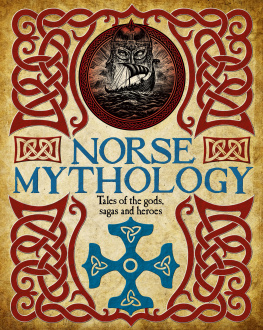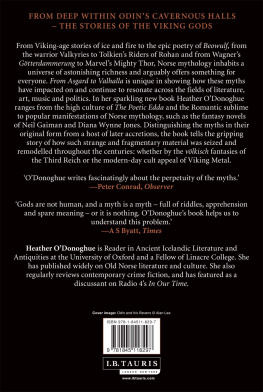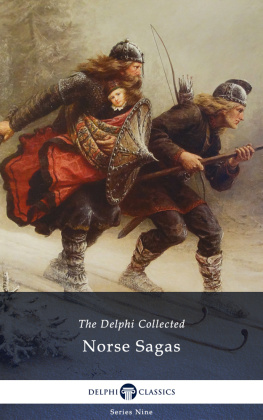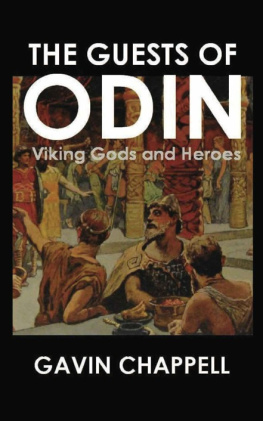To my mentors
Gary Aho and Andrew Wawn
Published by Reaktion Books Ltd
Unit 32, Waterside
4448 Wharf Road
London N1 7UX, UK
www.reaktionbooks.co.uk
First published 2017
Copyright Jn Karl Helgason 2017
All rights reserved
No part of this publication may be reproduced, stored in a retrieval system, or transmitted, in any form or by any means, electronic, mechanical, photocopying, recording or otherwise, without the prior permission of the publishers
Page references in the Photo Acknowledgements and
Index match the printed edition of this book.
Printed and bound in Great Britain by TJ International, Padstow, Cornwall
A catalogue record for this book is available from the British Library
eISBN: 9781780237732
Prologue
Y ou know Gandalf, dont you?
Well, it may depend which Gandalf Im talking about. If we are to believe palaeontologist Ross Geller, of the American sitcom Friends, Gandalf is like, the funniest guy in the world. Gandalfs real name is Mike Ganderson, but the nickname suits, since he is like the party wizard, as Ross explains to Joey Tribbiani in the fourth season of the long-running television series. Joey clearly misses the point:
Joey: Why do you call him Gandalf?
Ross: Gandalf the Wizard. Hallo! Didnt you read The Lord of the Rings in high school?
Joey: No, I had sex in high school.
Sadly, this Gandalf cancels his proposed get-together with Ross and Chandler Bing, and is never seen in this or any other episode of Friends.
If instead we are to believe philologist J.R.R. Tolkien, author of the fantasy novel The Hobbit (1937) and its sequel The Lord of the Rings (19545), Gandalf is one of the most powerful wizards of Middle-earth. In the first chapter of The Hobbit he sets the narrative in motion by tricking Bilbo Baggins into accommodating a party for Thorin Oakenshield and his twelve dwarf companions: Dwalin, Bifur, Bofur, Bombur, Nori, Oin, Fili, Kili, Gloin, Dori, Ori and Balin. On this occasion, Gandalf the Grey is characterized as
an old man with a staff. He had a tall pointed blue hat, a long grey cloak, a silver scarf over which his long white beard hung down below his waist, and immense black boots.
Good Morning! said Bilbo, and he meant it. The sun was shining, and the grass was very green. But Gandalf looked at him from under long bushy eyebrows that stuck out further than the brim of his shady hat.
What do you mean? he said.
Even if you too were busy with something other than reading fantasy in high school, it is highly probable that you have come across a version of this imposing party-wizard by other means. You might know him from Arthur Rankin Jr and Jules Basss animated television movie The Hobbit (1977), Ralph Bakshis animated film The Lord of the Rings (1978) or more recently, as portrayed by Ian McKellen, from Peter Jacksons two blockbuster trilogies, The Lord of the Rings (20013) and The Hobbit (201214).
Last, but not least, if we are to believe the testimony of Snorra Edda (also known as the Younger Edda or Prose Edda), a thirteenth-century manual of poetics attributed to the Icelandic chieftain and poet Snorri Sturluson, Gandalf belongs to a group of midgets within the ecosphere of pagan Nordic mythology. Originally, after the gods Odin, Vili and Ve had created the Earth from the corpse of the giant Ymir, a fraternity of dwarfs quickened in Ymirs flesh as maggots. Later they became conscious with intelligence and had the shape of men though they live in the earth and in rocks. Verifying this clarification, the author of Snorra Edda quotes a few stanzas from Vlusp (The Prophecy of the Seeress), one of a series of early eddic poems (generally known as the Elder Edda or Poetic Edda) embodying Nordic pagan myths and Germanic heroic legends. The stanzas in question include an apparently banal list of dwarf names:
Nyi, Nidi, Nordri, Sudri, Austri, Vestri, Althiolf, Dvalin, Nar, Nain, Niping, Dain, Bifur, Bafur, Bombor, Nori, Ori, Onar,
As it happens, Vlusp was a part of the native literary canon that I was made to read during my Reykjavik high-school years in the early 1980s, and it was also a part of the vast medieval corpus that Tolkien focused on as an academic and was inspired by as a novelist. Virtually every day of his working life as a Professor of Anglo-Saxon, or of English Language and Literature, he found himself reading, teaching, or referring to works like Beowulf, the Elder Edda, or Snorri Sturlusons Prose Edda, explains Tom Shippey, a leading authority on Tolkiens fictional universe and his medieval literary sources. And as every Lord of the Rings buff will tell you, these unremarkable stanzas from Vlusp not only lie behind the name of Gandalf the Grey and thus, by extension, the nickname of Mike Gandalf Ganderson but the names (italicized above) of twelve of the thirteen dwarfs who pop up in Bilbo Bagginss hobbit-hole in the early pages of The Hobbit. Lately, manufacturers of toys and games have reproduced this group for younger generations. One of the most recent creations of this industry is LEGO The Hobbit (2014), an action-adventure video game featuring the cast of Tolkiens novel as Lego characters, who themselves are also available in a range of Middle-earth Lego sets.
This animated existence of the dwarfs from Vlusp is symbolic of the contemporary afterlife of the medieval eddas and sagas, which is the principal concern of this book. In our modern age the adaptation of these texts is not limited to the northern European philologists, translators, writers and artists who were most active in cultivating the Nordic literary heritage in the late eighteenth and early nineteenth centuries. Over the past century, adaptations of the eddas and sagas have appeared in a variety of formats and platforms: from radio, cinema and television, to LPs, CDs and DVDs, to travel books, comics and digital media. Leading entertainment companies in Europe, North America and Southeast Asia have eagerly engaged with this exotic old northern literature, distributing their multimedia products to the four corners of the world.
The links between these variations and one or more original works from the corpus of the eddas and sagas the real stories, as we can call them for now are naturally quite diverse. Modern adaptations of older literature do not represent our historical past so much as they represent our ideas or cultural stereotypes about that past, according to Fredric Jamesons analysis of postmodernism and consumer society. However, that does not make these works any less interesting or important:








